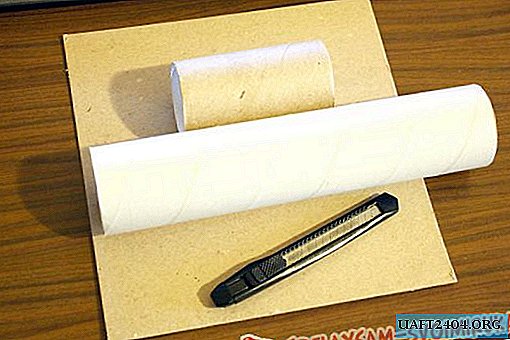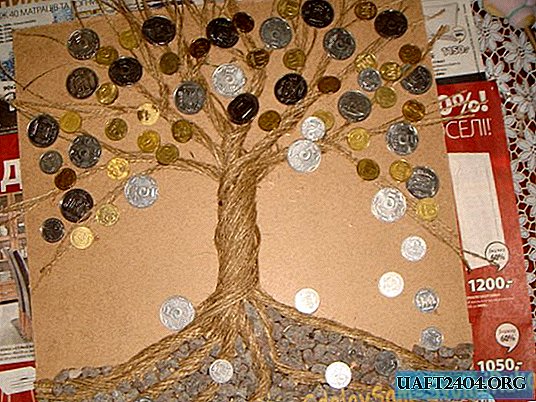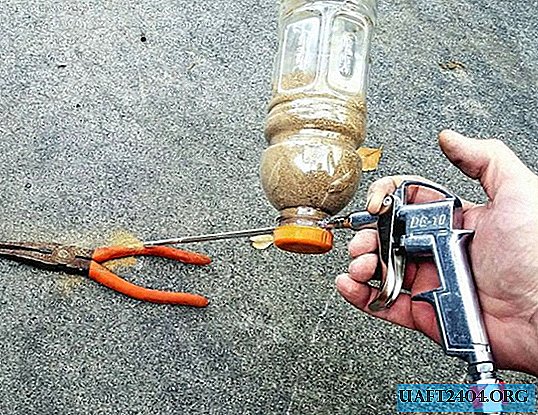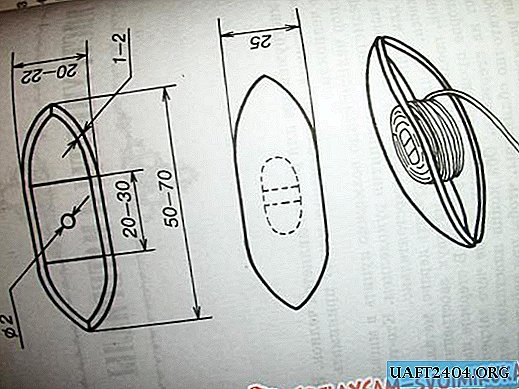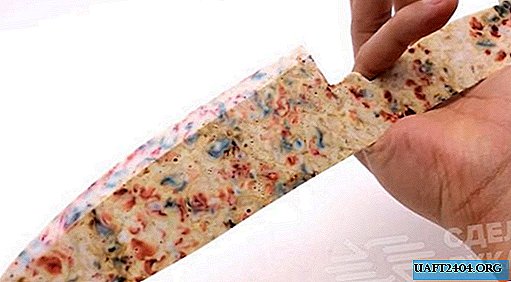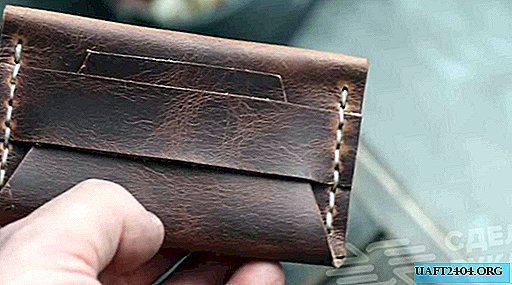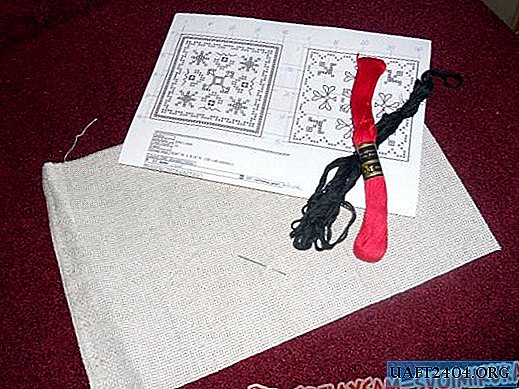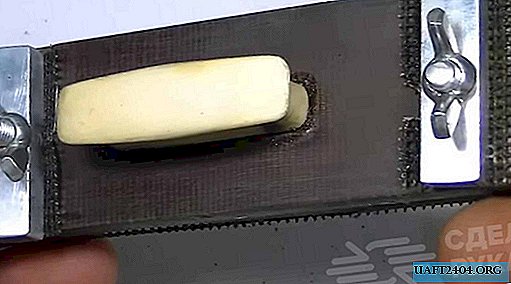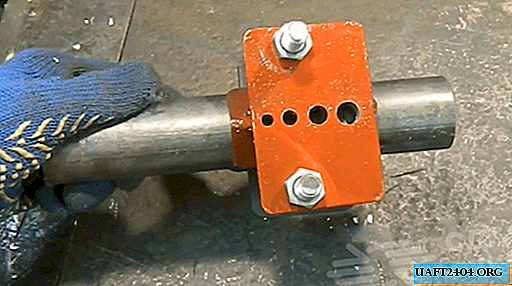Share
Pin
Tweet
Send
Share
Send
The tree will perfectly decorate the interior, or is suitable as an unusual and exclusive gift. They are made from various materials: paper, beads, cardboard, etc.
But, unfortunately, not everyone has the right materials. You can make a tree of simple and affordable things that many have, or are inexpensive.
The basis of this master class is laid 2 materials: wire and nail polish to make a tree with your own hands.
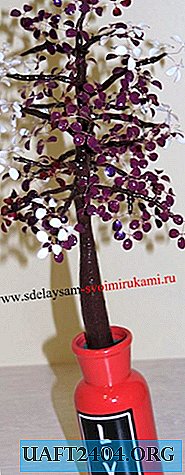
To work, we need:
- Nail polish.
- Thin wire.
- Thick wire.
- Side cutters (to bite the wire).
- A round straight thing (e.g. pen, pencil, etc.). In my case, this is a makeup brush.
- The substrate or sponge for dishes.
- Plasticine.
- Vase.
- Alabaster.
In the beginning, for work, we need wire, side cutters, a brush for makeup, nail polish and a sponge (or a substrate, which is usually used in a grocery store).

1. A wire is wound on the opposite end of the brush. At the base of the brush, the wire is compressed with your fingers, it must be scrolled 3-4 times (depending on the diameter of the brush).
It turns out one circle (future leaflet).

2. You need to twist another circle.

3. Twist the last circle to get 3 circles.

4. You need to alternately put circles on the brush, and gently pull the edge of the circle with your finger (or fingernail). The result should be an elongated leaf.

5. We do the same with the rest of the circles. It turns a shamrock. The diameter of the brush is 8 mm. It is necessary to leave a leg with a length of 5 cm. About 14.1 cm of wire leaves for one trefoil.

6. In a similar way we make 2 more such shamrocks. But in 1 out of 3 shamrocks, it is necessary to leave the leg slightly longer, about 7 cm (instead of 5 cm).

7. On a shamrock with a longer leg, we wind the remaining ones one by one 2. Now this element, which consists of 3 shamrocks, we will call - BASIC.

8. Start with the first leaflet (you can choose the color yourself). At the beginning of the work, it is very important to adapt to an unusual process.
Having collected more varnish on the brush, we begin to draw it along the wire from the middle to the edge (this is easiest than the other way around).

The main thing in the process: to press the brush so that voids do not form between the brush and the wire (otherwise the varnish will not go further and peel off); and at one time to spend from 1 edge to another. Only in this case will it be possible to make a film of varnish, which will cover the wire.
Also do with the rest of the leaves.

9. When 1 coat of varnish dries (approximately 2 minutes, depending on its composition), you need to apply another coat of colored varnish. The color will become more saturated, you will not see the missed areas (which stand out against the general background in that they shine through).

10. The second layer dries longer than the first. About 20 minutes. Then apply 3 coat of varnish. Where the leaves are well stained - transparent. And in places where there are defects, you need to paint over with another colored layer of varnish. You can do it in the reverse order: first apply a layer of transparent varnish, and the other 2 - paint in color.

11. Best after applying 3 layers of varnish, leave the product to dry overnight. And to paint in a room where everything is well ventilated.
It is necessary to prepare many of these basic branches.

I got 54 pieces of various colors. It is best to put such branches on a substrate from products to dry. The wire is easily stuck into it. You can use a sponge for dishes. But sticking branches into it is more difficult, and small pieces of a sponge can sometimes fall out of it.
After the varnish is completely dry, you can begin to assemble large branches.
12. You need to take a wire with a length of about 60-80 cm and fold it in half. Then fold again in half. Attach 3 basics to it alternately. Then you need to repeat this action for 2 more large branches.

13. Similar to the previous step, bend 80 cm of the wire in half, and again in half. And wrap 3 large branches on it.

14. From such branches (17 pieces) we collect the base of the tree. Do not try to make them fluffy, as this is an extra action. Then, in the process of manufacturing the barrel, they will have to be pressed together to make it more convenient to work with plasticine.

15. Then we take 3 pieces of thick wire, and attach to the trunk. You can do this with anything: glue, plasticine, wire, etc. We get a barrel of wire, but as if unfilled - empty. It can be stuffed with paper or newspaper. And top with plasticine.

16. On top of plasticine, with a brush or hands, cover the trunk with alabaster. When working with such material, it is better to use gloves. It is sold in any hardware store and is inexpensive (approximately 20 rubles per 1 kg.). For all work 1 kg. Alabaster will be enough.
17. We plant alabaster and fill the vase almost to the top (leaving about 4 cm). Immediately insert the barrel into the vase (the alabaster hardens very quickly), and wait until it hardens (about 5-7 minutes, so it hardens, and the barrel will not be able to move in different directions). Paint the trunk brown.

18. The next step is very long and painstaking. All branches need to be coated with plasticine so that the wire is not visible. Then we paint over all the branches with brown varnish. The lighter the color of plasticine will be, the easier it will be to paint over. Alabaster, which is visible from the vase, is painted in green (imitating grass).

At the end of all work, let the varnish dry, it is advisable to leave it to dry overnight.
19. After the varnish has dried, it is necessary to straighten all the branches and leaves. It happens that the leaves are damaged and crack, but on this leaf you can apply another layer of colored varnish.


All the work took about 6 bubbles of nail polish (along with the barrel). About 4 plasticine sticks.
Thank you for your attention to the master class, I will be glad to your comments.
Share
Pin
Tweet
Send
Share
Send

